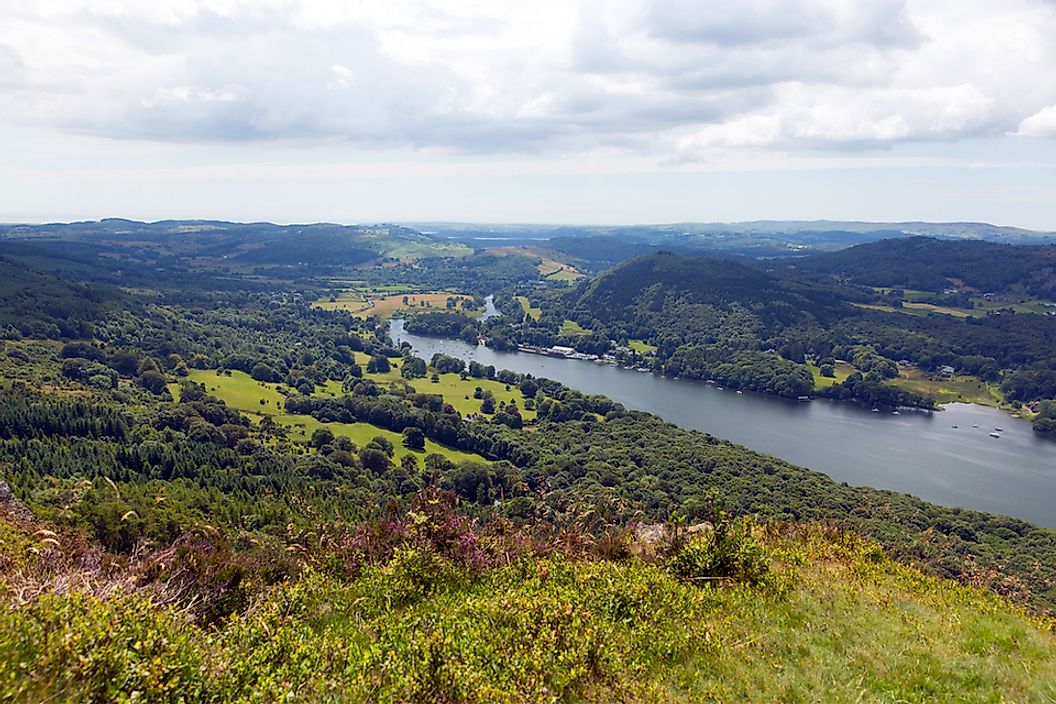What Is a Ribbon Lake?

The term ribbon lake is used to describe a lake that runs longer than it does wide. Geologically speaking, a ribbon lake sits within a rock basin, which is an area of soft rock that sits at a low elevation and is surrounded by an area of hard rock that sits at a higher elevation. In most cases, the depressed area that holds the ribbon lake is located below elevated moraines, which are collections of debris left by glaciers. These moraines act as natural dams, which allow rainwater and glacial melt to build up in the depressed area. The result is referred to as a ribbon lake.
How Is a Ribbon Lake Formed?
Ribbon lakes are the perfect example of the effects of glacial erosion on the surface of the Earth. These lakes typically originate in ancient river valleys, where glaciers were formed during periods of glaciation. Glaciers become wider and deeper than the surrounding valley. This shape leads to erosion of the valley floor, particularly where the thickened ice meets softer rock. As the glacier moves, it picks up large rocks and boulders, which slide under the glacier, causing erosion by abrasion as the glacier slides along the valley. Since the surrounding rock is harder than the valley floor, it is not easily eroded and remains at a higher elevation, untouched by the glacier. The result is a depressed area, known as a rock basin. These rock basins take on the long and narrow shape of the original river valley. Additionally, the glacier leaves behind debris (known as moraine) picked up while moving through the valley. This debris, which collects around the borders of the rock basin, is made up of silt, rock, and other sediments. At the end of the glaciation period, runoff from the melting glaciers and rainwater collects in the rock basin, forming a ribbon lake.
Ribbon Lakes Around the World
Ribbon lakes exist throughout the world, and are typically concentrated in mountainous areas where glacial erosion has carved the landscape. Some of the most well-known ribbon lakes around the world include Driedmeat Lake in the Canadian province of Alberta, Windermere Lake in northwest England, and Lake Washington in the US state of Washington.
Driedmeat Lake has a surface area of 6.4 square miles, measuring 9.7 miles at its longest point and 0.56 miles at its widest. It is the main source of water for the city of Camrose, which uses 5.5 million liters of water daily. Additionally, Driedmeat Lake is a popular spot for fishing, as it is home to a number of fish species, including lake chub, white sucker, and northern pike.
Windermere Lake has a surface area of 5.69 square miles, measuring 11.23 miles at its longest point and 0.93 miles at its widest. It is located in England's Lake District National Park, and contains 18 islands. The lake is also popular with boating enthusiasts.
Lake Washington has a surface area of 33.8 square miles, measuring 22 miles at its longest point. It has an average depth of about 108 feet and is the second largest lake in the state. A total of three floating bridges are built across Lake Washington, as its muddy bottom prevented the construction of regular suspension bridges.











